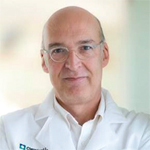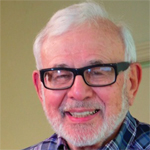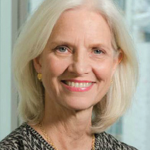
Between 1929 and 1937, six important academically oriented rheumatology units were established in the U.S., marking the beginning of the modern period.
Image Credit: Ollyy; kentoh/shutterstock.com
In medicine, as in all other areas of human endeavor, we cannot really understand where we are if we don’t understand how we arrived here. American rheumatology traces its origins nine decades back to Europe, when the International Committee on Rheumatism was founded by Jan van Breeman in 1925 at a European meeting of medical hydrology. National committees on rheumatism were established shortly afterward in various European nations; the international committee was soon renamed the Ligue Internationale Contre le Rhumatisme.
Louis B. Wilson of the Mayo Foundation, after meeting with European leaders, returned to the United States with intentions of forming a comparable American committee. The resulting group of interested physicians, under the leadership of Ralph Pemberton of Philadelphia, organized an effort as part of the International League. What followed has been documented in detail; this brief history draws heavily on these sources.1-3
Organized American Rheumatology
At its initial meeting in Philadelphia in 1928, the group named itself the American Committee for the Control of Rheumatism (ACCR). Their stated purpose was to stimulate “professional and lay interest in arthritis, research and education, the development of a nomenclature and to publicize therapeutic measures of proven value.” This group met informally periodically over the next few years and prepared exhibits for physician education at the annual sessions of the American Medical Association from 1930–34.
In 1934, the group renamed itself the American Association for the Study and Control of Rheumatism (AASCR) and met in Cleveland, for what they regarded as their first official meeting. This cumbersome title was modified in 1937 to the American Rheumatism Association (ARA).
Much of the initial work done by the Association involved the classification of rheumatic diseases and consideration of possible etiologic factors, differential diagnosis and medical and orthopedic treatment. Early publications by the group included an educational, lay-directed pamphlet, “What Is Rheumatism?” (1930) and the “Primer on Rheumatism, Chronic Arthritis,” prepared for medical professionals.
In 1935, under the leadership of Philip S. Hench, MD, of the Mayo Clinic, the AASCR initiated the Rheumatism Reviews, a series of periodic reviews of the English-language literature dealing with arthritis and rheumatism. Initially appearing in the Annals of Internal Medicine and subsequently in Arthritis & Rheumatism, the last such publication was in 1983. A number of European rheumatologic journals were founded in the 1930s and 1940s; however, the first American rheumatology journal, Arthritis & Rheumatism, was not published until 1958.
While these organizational efforts were going on, clinical rheumatology was taking root in the U.S. In the early 20th century, it was orthopedists who pioneered both surgical and non-surgical treatment of arthritis. Understanding of rheumatic diseases was rudimentary; it was generally believed that rheumatic diseases were related to foci of infection, but a number of thoughtful internists were skeptical of this hypothesis and turned their attention to more critical study of joint disease.
Patient-care-oriented, non-orthopedic arthritis clinics were established by intellectually curious and compassionate clinicians at about a dozen sites across the United States in the 1920s and 1930s.
Patient Care, Teaching & Research
Between 1929 and 1937, six important academically oriented rheumatology units were established in the U.S., marking the beginning of the modern period. Many young rheumatologists who trained in these programs went forth to found rheumatology units at medical centers across the country.
The Mayo Clinic, in particular, played a critically important early role in American rheumatology’s evolution.4 In 1926, five years after arriving at the Mayo Clinic for post-medical school training, Dr. Hench was appointed to head a new service for patients with chronic arthritis, including an inpatient rheumatology unit. To gain more experience, he spent a half year (1928–29) visiting rheumatologists in Europe.
Dr. Hench served as the only staff rheumatologist at Mayo for nearly 10 years until Charles H. Slocumb, MD, joined him in 1935. He encouraged others to join him in compiling the aforementioned annual Rheumatism Reviews, for which he served as chief editor from 1932 to 1948. This rheumatology training program was of great importance nationally; for a time, this was the only place in the nation where one could train in rheumatology.
In the early 20th century, it was orthopedists who pioneered both surgical & non-surgical treatment of arthritis.
In a survey in the early 1960s, nearly 10% of ARA members had trained under Dr. Hench. Not surprisingly, Dr. Hench served a term as president of the ARA, as did three rheumatologists who remained on the staff of the Mayo Clinic after training with him: Drs. Slocumb, Howard Polley and Emmerson Ward.
In 1948, American medicine was dramatically transformed by the Mayo group when they reported that adrenocorticotropic hormone and cortisone had a marked anti-inflammatory effect in rheumatoid arthritis. For this discovery, Dr. Hench, along with the Mayo Clinic biochemist Edward C. Kendall and the Swiss chemist Tadeus Reichstein, was awarded the Nobel Prize for Physiology or Medicine in 1950.
The rheumatology unit at Harvard opened at the Massachusetts General Hospital in 1929 under the leadership of Walter Bauer, MD, who served in this role for nearly 30 years. In collaboration with Marian Ropes, Dr. Bauer published a volume in 1953, in which they described the results of 25 years of study of synovial fluid in various diseases; this book played a significant role in the evolution of rheumatology.5
Outstanding, groundbreaking basic research emerged from this unit over several decades. Many American and European physicians trained in this program, and a great many of them became leaders in rheumatology throughout the world. Notable American examples were Hans Waine, MD, who organized the arthritis clinic at the University of California at San Francisco, and his successor, Ephraim Engleman, MD, the director of the Rosalind Russell Medical Research Center for Arthritis, which he founded in 1979, and where he remained active until his recent death at the age of 104.
In 1929, a rheumatology unit at Presbyterian-Columbia Medical Center was established, headed by Ralph H. Boots, MD. He was aided by Martin Dawson, MD, who had worked with Oswald Avery, MD, at the Rockefeller Institute.6 After Dr. Dawson’s early death in 1945, he was succeeded by a former fellow, Charles Ragan, MD.
An extremely important contribution of Dr. Ragan’s unit was the rediscovery of rheumatoid factor in 1948. (Originally described by Dr. Waller in Norway in 1940, that finding was lost in the shuffle during World War II.) The Columbia group’s finding brought this autoantibody, the first associated with a rheumatologic disease, to the attention of the broad rheumatologic community and opened the door to subsequent investigation of autoimmunity.7
A Rheumatic Disease Study Group was established at New York University under Currier McEwan, MD, in 1932. This unit’s unique multidisciplinary organization included members from medicine, pediatrics, microbiology and, ultimately, 12 clinical and basic science departments. In 1956, the National Institute of Arthritis and Metabolic Diseases (NIAMD) awarded the Rheumatic Diseases Study Group one of the first large training grants; more than 200 fellows were trained. Noteworthy among the trainees of this program were Joseph Bunim, MD, who left in 1954 to become the first clinical director of the Arthritis and Rheumatism Branch of the NIAMD in Bethesda, and Morris Ziff, MD, who founded the very strong rheumatology unit at the University of Texas Southwestern Medical School in Dallas in 1958.
The University of Pennsylvania set up a rheumatology clinic in 1937, headed by Bernard Comroe, MD. His comprehensive multi-authored textbook, Arthritis and Allied Conditions, initially published in 1940, quickly became the standard textbook of rheumatology.
Following Dr. Comroe’s premature death in 1945, Joseph L. Hollander, MD, who had served under Drs. Hench and Bauer at the Army and Navy Arthritis Center at Hot Springs, Ark., succeeded him. Initially titled, Comroe’s Arthritis and Allied Conditions, Dr. Hollander’s book continued to be the standard text for many years.
With the encouragement of family members of a patient with rheumatoid arthritis (often the case for many of the original rheumatology units), the Rackham Arthritis Unit was opened in 1937 at the University of Michigan. Richard Freyberg, MD, was selected to direct the unit. His first rheumatology fellow was Charley J. Smyth, MD. This rheumatologic unit contributed a great deal to the infant field of rheumatology. In 1944, Dr. Freyberg left Ann Arbor, Mich., to become physician in chief at the Hospital for Special Surgery in New York, and Dr. Smyth left in 1949 to develop the important rheumatology program at the University of Colorado in Denver.
Cleveland’s Role
Of particular interest to us, of course, is the role played by two Clevelanders in the evolution of American rheumatology. Russell L. Haden (1888–1952), MD, chief of medicine at the then-fledgling Cleveland Clinic from 1929–49, had broad medical interests, but took particular interest in the nascent field of rheumatology.8 He played a major role in the founding of the ACCR, which soon became the AASCR. He was installed as its first vice president, became its second president (1935–36) and was part of the planning committee for the landmark 1934 Cleveland meeting, over which he presided. Dr. Haden likely played a major role in writing the “What Is Rheumatism” pamphlet, and was the final editor of the second Rheumatism Primer. In an influential 1930 paper titled, “Types and Treatment of Chronic Rheumatism,” Dr. Haden discussed two types of chronic rheumatism: atrophic and hypertrophic.9
An extremely important contribution of Dr. Ragan’s unit was the rediscovery of rheumatoid factor in 1948. (Originally described by Dr. Waller in Norway in 1940, that finding was lost in the shuffle during World War II.)
Robert M. Stecher, MD (1896–1972), whose mother developed rheumatoid arthritis in about 1930, shortly concluded that not much was really known about arthritis and decided to devote his life to the study of rheumatic diseases. In 1935, he established a small arthritis clinic at the Cleveland City Hospital, a small public hospital for medically indigent people (currently MetroHealth Medical Center). Like Dr. Haden, Dr. Stecher attended the first public meeting of the AASCR in 1932. He served as president of the ARA in 1947–48 and as president of the Ligue Internationale Contre le Rhumatisme from 1953–57. He and his collaborators described the role of heredity in four rheumatic diseases a half century ahead of their time.10 In 1954, he was awarded the Heberden medal after delivering the Heberden Oration in London; his topic, appropriately—Heberden’s Nodes.11
The Infant Grew Up
In 1971, the American Board of Internal Medicine approved rheumatology board certification, but adult rheumatology fellowship programs did not receive accreditation by the Accreditation Council for Graduate Medical Education until 1987.12 In 1985, the ARA formally separated from the Arthritis Foundation, with which it had merged in 1965, and renamed itself the American College of Rheumatology (ACR).
Over the course of nine decades—and despite many organizational name changes—interest in the field of rheumatology has flourished. Our understanding of rheumatic diseases has exploded, and our ability to help our patients has improved enormously. The membership of the ARA/ACR exponentially increased from 75 members in 1934 to more than 8,100 members in 2015.
Anyone who has attended the ACR/ARHP Annual Meeting does not have to be told how attractive it has become and how interesting and richly informative it is. The Annual Meetings, boasting speakers and moderators from more than 30 nations, have become the de facto international rheumatology meeting; it currently attracts more than 15,000 attendees from more than 100 countries from around the world. Indeed, there were more attendees from outside the U.S. (~60%) than from the U.S. (~40%) at the 2014 meeting.13
We can confidently look forward to continuing growth, as our understanding of the mechanisms that lead to the rheumatic diseases and the therapeutic tools available to us both continue to grow.

Dr. Antonelli
Maria J. Antonelli, MD, is a native Clevelander; after spending six years in training at Case Western Reserve University at MetroHealth Medical Center, she just could not get enough. She is a new staff rheumatologist there (since July 2015).

Dr. Cassandra Calabrese
Cassandra M. Calabrese, DO, is doing her fellowship in both rheumatology and infectious disease at the Cleveland Clinic. She did her internal medicine residency at the Cleveland Clinic and served as the chief medicine resident prior to fellowship.

Dr. Leonard Calabrese
Leonard H. Calabrese, DO, is a professor of medicine at the Cleveland Clinic Lerner College of Medicine of Case Western Reserve University and vice chair of the Department of Rheumatic and Immunologic Diseases. Dr. Calabrese, a Master of the American College of Rheumatology, is the director of the R.J. Fasenmyer Center for Clinical Immunology at the Cleveland Clinic.

Dr. Kushner
Irving Kushner, MD, is an emeritus professor of medicine at Case Western Reserve University. A Master of the American College of Rheumatology, he served many years as director of the Division of Rheumatology at MetroHealth Medical Center in Cleveland.
References
- Stecher RM. The American Rheumatism Association; its origins, development and maturity. Arthritis Rheum. 1958;1(1):4–19.
- Smyth CJ, Freyberg RH, McEwen C. History of Rheumatology. Atlanta: Arthritis Foundation, 1985.
- Pisetsky DS. The ACR at 75: A Diamond Jubilee. Chapter 1. E. P. Engleman. The History of ACR: Before 1970. Hoboken, N.J.: Wiley-Blackwell, 2009.
- Hunder GG, Matteson EL. Rheumatology practice at Mayo Clinic: The first 40 years—1920 to 1960. Mayo Clin Proc. 2010;85(4):e17–e30.
- Ropes MW, Bauer W. Synovial Fluid Changes in Joint Disease. Cambridge, Mass.: Harvard University Press, 1953.
- Kushner I, Samols D. Oswald Avery and the pneumococcus. Pharos Alpha Omega Alpha Honor Med Soc. 2011;74(2):14–18.
- Christian CL. The Discovery of the Rheumatoid Factor. II. Rose, Ragan, Pearce & Lipman. 1948. Clin Exp Rheumatol. 1998;16(3):345–349.
- Clough JD. To Act as a Unit: The Story of the Cleveland Clinic, 4th ed. Cleveland: Cleveland Clinic Press, 2004.
- Haden R. Types and treatment of chronic rheumatism. Proceedings, Minneapolis Assembly, Inter-state Post Graduate Medical Association of North America. 1930:404–408.
- Stecher RM. Hereditary factors in arthritis. Med Clin North Am. 1955;12:499–508.
- Stecher RM. Heberden’s nodes; a clinical description of osteo-arthritis of the finger joints. Ann Rheum Dis. 1955;14(1):1–10.
- American College of Rheumatology Annual Report 2009.
- Willmon J. ACR staff. Personal communication. 2015 Jul 21.



